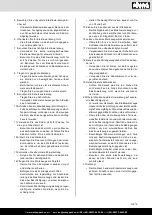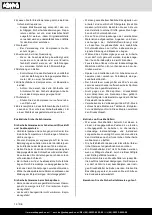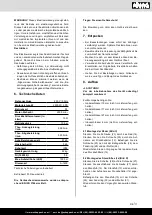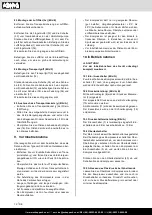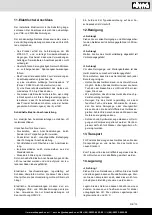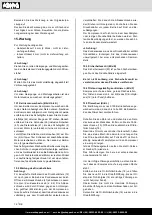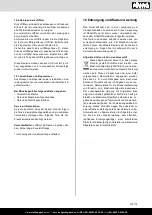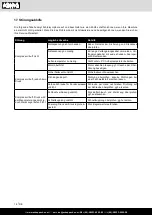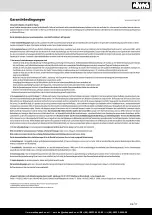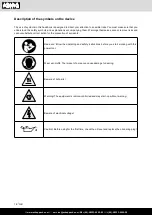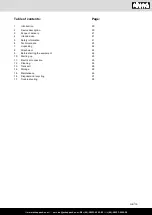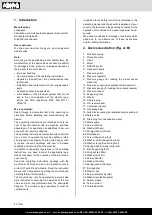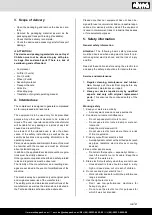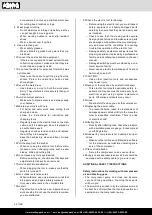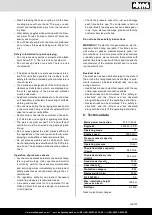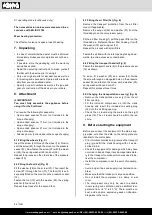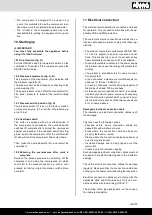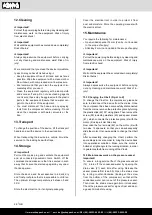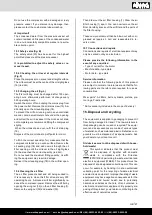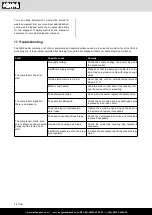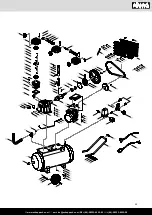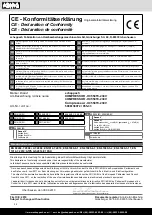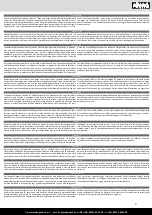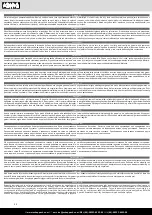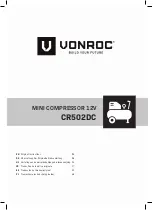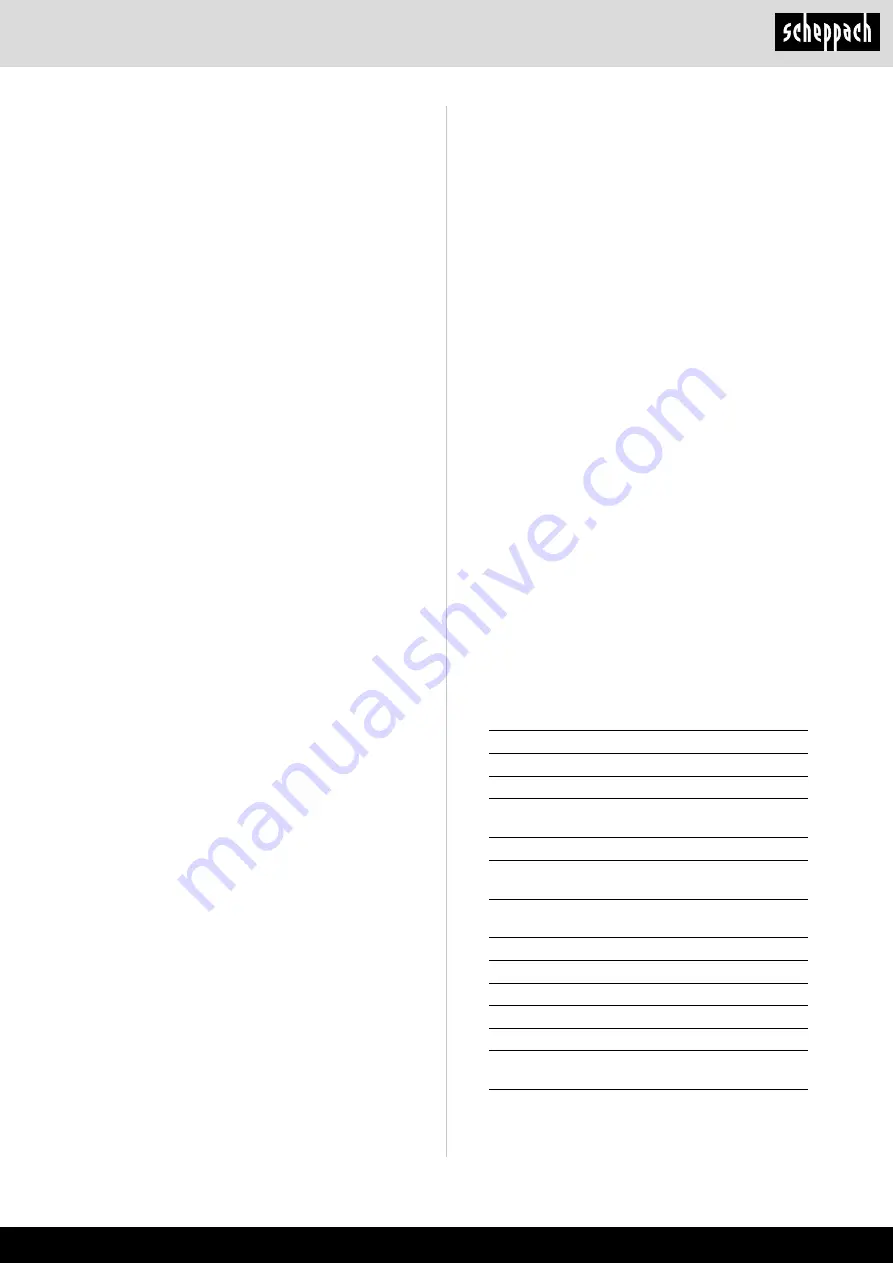
www.scheppach.com /
+(49)-08223-4002-99 /
+(49)-08223-4002-58
GB | 23
• Check the pressure vessel for rust and damage
each time before use. The compressor shall not
be operated if the pressure vessel is damaged or
rusty. If you discover damage, please contact the
customer service workshop.
Do not lose these safety instructions
WARNING!
This electric tool generates an electro-
magnetic field during operation. This field can im
-
pair active or passive medical implants under cer-
tain conditions. In order to prevent the risk of serious
or deadly injuries, we recommend that persons with
medical implants consult with their physician and the
manufacturer of the medical implant prior to operat-
ing the electric tool.
Residual risks
The machine has been built according to the state of
the art and the recognised technical safety require-
ments. However, individual residual risks can arise
during operation.
• Health hazard due to electrical power, with the use
of improper electrical connection cables.
• Residual risks can be minimised if the „safety in-
structions“ and the „Proper use“ are observed
along with the whole of the operating instructions.
• Residual risks can be minimised if the „safety in-
structions“ and the „Proper use“ are observed
along with the whole of the operating instructions.
6. Technical data
Mains power connection
230 V / 50Hz
Engine W
2200 W / 3 PS
Operating mode
S1
Engine speed
2900 min
-1
Pressure vessel capacity
(in liters)
100l
Operating pressure
10 bar
Theoretical intake capacity
(l / min)
550 l/min
Theoretical delivery rate
(l / min)
350 l/min
Sound power level L
WA
97 db
Uncertainty K
WA
3 db
Protection category
IP54
Device weight in kg
82 kg
Oil (15W 40) l
0,9
Max. installation height
(above sea level)
1000 m
Belt type
A-1400
Reserve technical changes
• When releasing the hose coupling, hold the hose
coupling piece with your hand. This way, you can
protect yourself against injury from the rebound-
ing hose.
• Wear safety goggles when working with the blow-
out pistol. Foreign bodies or blown off parts can
easily cause injuries.
• Do not blow at people with the blow-out pistol and
do not clean clothes while being worn. Risk of in-
jury!
Safety information for paint spraying
•
Do not process any paints or solvents with a flash
point below 55° C. There is a risk of explosion!
• Do not heat up paints or solvents. There is a risk
of explosion!
• If hazardous liquids are processed, wear protec-
tive filter units (face guards). Also, adhere to the
safety information provided by the manufacturers
of such liquids.
• The details and designations of the Ordinance on
Hazardous Substances, which are displayed on
the outer packaging of the processed material,
must be observed.
• Additional protective measures are to be undertak-
en if necessary, particularly the wearing of suitable
clothing and masks.
• Do not smoke during the spraying process and/or
in the work area. There is a risk of explosion! Paint
vapors are easily combustible.
• Never set up or operate the equipment in the vicini-
ty of a fire place, open lights or sparking machines.
• The work area must exceed 30 m
3
and sufficient
ventilation must be ensured during spraying and
drying.
• Do not spray against the wind. Always adhere to
the regulations of the local police authority when
spraying combustible or hazardous materials.
• Do not process media such as white spirit, butyl
alcohol and methylene chloride with the PVC pres-
sure hose. These media will destroy the pressure
hose.
Operation of pressure vessels
• Anyone who operates a pressure vessel must keep
this in good working order, operate and monitor
it correctly, perform the necessary maintenance
and servicing works immediately and implement
safety measures as required according to the cir-
cumstances.
• The regulatory authority can instruct necessary
monitoring measures in individual cases.
• A pressure vessel must not be operated if it ex-
hibits a defect that poses a danger to personnel
or third parties.

